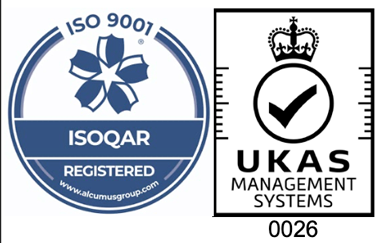The Different Types of Synthetic Rubber
14th February, 2024
Synthetic rubber is the umbrella term given to any man-made elastomer. It differs from natural rubber as it doesn’t occur naturally, even though it shares many characteristics.
Synthetic rubber manufacturers make up part of a global effort to make rubber production more sustainable- because synthetic rubber manufacturers use polymers synthesised from petroleum byproducts as base compounds.
In this article we’ll outline all of the synthetic rubber offerings available from Aquaseal, outlining the characteristics of each and most common uses.
PVC
Polyvinyl chloride (PVC) is a frequently used synthetic plastic polymer. It is a thermoplastic polymer that can be either hard or flexible.
Due to its high operating temperature of approximately sixty degrees, flame retardancy, and a multitude of other advantageous properties, PVC is utilised in a wide variety of applications. Some of which include:
Polyurethane
The shore hardness of polyurethane can range anywhere from being softer than a pencil rubber to being harder than nylon, or anything in between.
Polyurethane can be made from a wide range of diisocyanates and polyols, allowing for a wide range of materials to be tailored to different purposes, such as:
- Shocks
- Isolators
- Seals
- Cutting surfaces
- Gaskets
Nitrile
Nitrile is a synthetic rubber derived from acrylonitrile.
The qualities of this rubber vary depending on the composition, but it is known for its resistance to oil, fuel, and other chemicals. This means that Aquaseal Rubber’s moulded rubber products made with Nitrile are suitable for various industrial applications, including:
- Oil hoses
- Fuel hoses
- O-rings
- Gaskets
- Watertight hatch seals
Neoprene
Neoprene is the trade name for a group of synthetic rubbers based on polychloroprene.
Neoprene rubber was initially created as an oil-resistant replacement for natural rubber. Neoprene rubber is resistant to ozone, sunlight, oxidation, and certain petroleum compounds. Water resistance, chemical resistance, resilience, and high tensile strength are just a few of the other advantages of this material.
Common uses for neoprene rubber include:
- Corrosion-resistant coatings
- Gaskets
- Hoses
- Sheeting
- Fabrications
Viton Rubber
Viton® is a registered trademark of Dupont Dow Elastomers L.L.C. and is an excellent choice for food-grade rubber since it can tolerate high temperatures and is extremely durable. It is also non-toxic and odourless, which meets the requirements of food manufacturers.
It provides high-temperature stability, low compression set, and resistance to chemicals, oil, and ozone. Although Viton® was initially fabricated for the aerospace industry; this rubber compound is used in many industries. Examples of its usage include:
- Food manufacturing and packaging
- Expansion joints
- Seals
- Caulks and adhesive
- Sponge and foam
EPDM
Ethylene Propylene Diene Monomer (EPDM) is a synthetic rubber composed mostly of ethylene and propylene. The inclusion of a small amount of diene allows the rubber to be cured with sulphur, resulting in a chemical structure similar to that of an unsaturated polymer. EPDM rubber has similar qualities to Neoprene rubber.
Aquaseal Rubber uses EPDM synthetic rubber compounds for both general and speciality outdoor applications, such as:
- Steam hoses
- High-temperature resistant seals
- Electrical insulation
- Roll covers
- D Fenders
Styrene Butadiene Rubber
SBR rubber is well-known for its high abrasion resistance, crack endurance, and ageing properties. It also has a high compression set, is water resistant, and has excellent bonding and heat-aging qualities.
Styrene-butadiene rubber (SBR) is the most popular and inexpensive synthetic rubber compound, and it is utilised in a wide variety of industrial applications, such as
- Automotive rubber
- Marine rubber
- Fabrications
- Sheeting
- Moulding
Butyl Rubber
Butyl rubber is currently one of the most popular synthetic rubber compounds on the market.
It is highly impervious to gas and moisture permeation. It is also resistant to oxygenated solvents, alkalis, flexing, and abrasion and can provide high energy absorption as well as electrical isolation. Butyl is also highly resistant to sunlight, ozone, heat ageing, animal and vegetable oils, ammonia, and countless other chemicals. Popular applications include:
- Stoppers for medical bottles
- Pharmaceutical supplies
- O-rings
- Inner tubes
- Moulding
Fluoroelastomers
Our fluoroelastomers are utilised in a wide range of high-performance applications, including aerospace, automotive, and industrial.
This synthetic rubber compound offers premium, long-lasting reliability in even the harshest environments, making it suitable for:
- Seals
- Marine Rubber
- Food-grade rubber
- Hose and tubing
- Extrusions
Silicone Rubber
Silicone rubber is an inorganic polymer composed of silicon and oxygen. With its long service life, this rubber compound is perfect for a wide range of industrial applications.
Typical custom silicone rubber products include:
- Insulators
- Rubber diaphragms
- Impact absorbers
- Seals
- Gaskets
Synthetic rubber from Aquaseal
At Aquaseal, we’re always looking for ways to further increase our sustainability levels by reducing the amount of non-renewable resources in our process.
Contact us for solutions to all your requirements, no matter how large or small.


